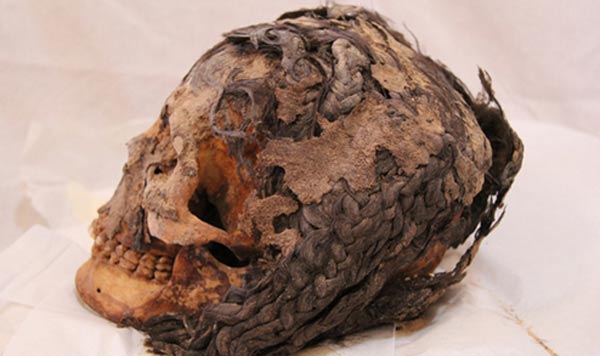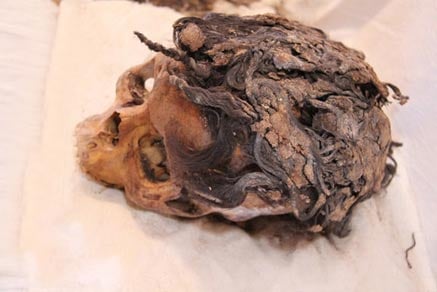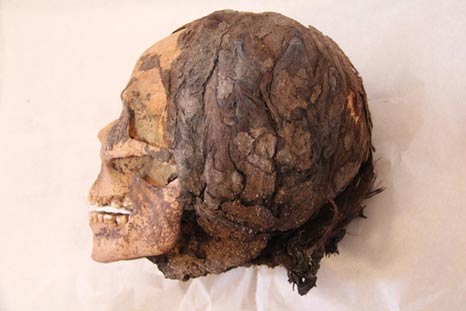
Archaeologists carrying out excavations at Tell el-Amarna in Egypt, the capital city built by Pharaoh Akhenaten in c. 1330 BC, have found a number of human remains containing well-preserved elaborate hairstyles, including one with more than 70 hair extensions, and another with red henna hair dye.
According to Live Science, the remains were found in a cemetery near the ancient city that is now known as Armana. The city was constructed as the new capital of Egypt under the reign of Akhenaten, a revolutionary king who set about to reform the religion of the time by transforming faith in Amun Ra to the god of Aten (the Sun Disc), thereby creating the first monotheistic religion. Originally born under the name Amenhotep IV, he later changed it to Akhenaten, meaning ‘the glory of Aten’. The Armana Project aims to investigate all aspects of the ancient city, including the intricate hairstyles worn by women of the time.
One of the most interesting sets of human remains belonged to a woman who was found wrapped in a mat. She wore “a very complex coiffure with approximately 70 extensions fastened in different layers and heights on the head,” writes archaeologist Jolanda Bos in an article recently published in the Journal of Egyptian Archaeology.
“Whether or not the woman had her hair styled like this for her burial only is one of our main research questions,” said Bos in an email to Live Science. “The hair was most likely styled after death, before a person was buried. It is also likely, however, that these hairstyles were used in everyday life as well and that the people in Amarna used hair extensions in their daily life.”

The remains of a woman with more than 70 hair extensions found in Armana. Credit: Jolanda Bos and Lonneke Beukenholdt
Bos also found a number of other interesting hair styles. Some had brown hair that had been formed into rings or coils around their ears, many had braids, one other skull with extensions had hair of different colours, suggesting the hair used to create the extensions came from multiple people. In a number of cases, fat was used to help form the hairstyles and keep it in place.
One woman was also found to have an orange-red colour on her graying hair. Bos said that she probably dyed her hair “for the same reason as why people dye their hair today, in order not to show the gray color.” The research team is currently analysing the hair dye, but they believe it comes from henna (a flowering plant) that has been used as a cosmetic hair dye for 6,000 years.

This woman’s gray hair appears to have been dyed orange-red. A flowering plant called henna may have been used to achieve this. Credit: Jolanda Bos and Lonneke Beukenholdt
The research team found that there was a wide variety of hair types among the same of 100 skulls (of which 28 still had hair), which ranged “from very curly black hair, to middle brown straight,” she noted in the journal article, something “that might reflect a degree of ethnic variation.”